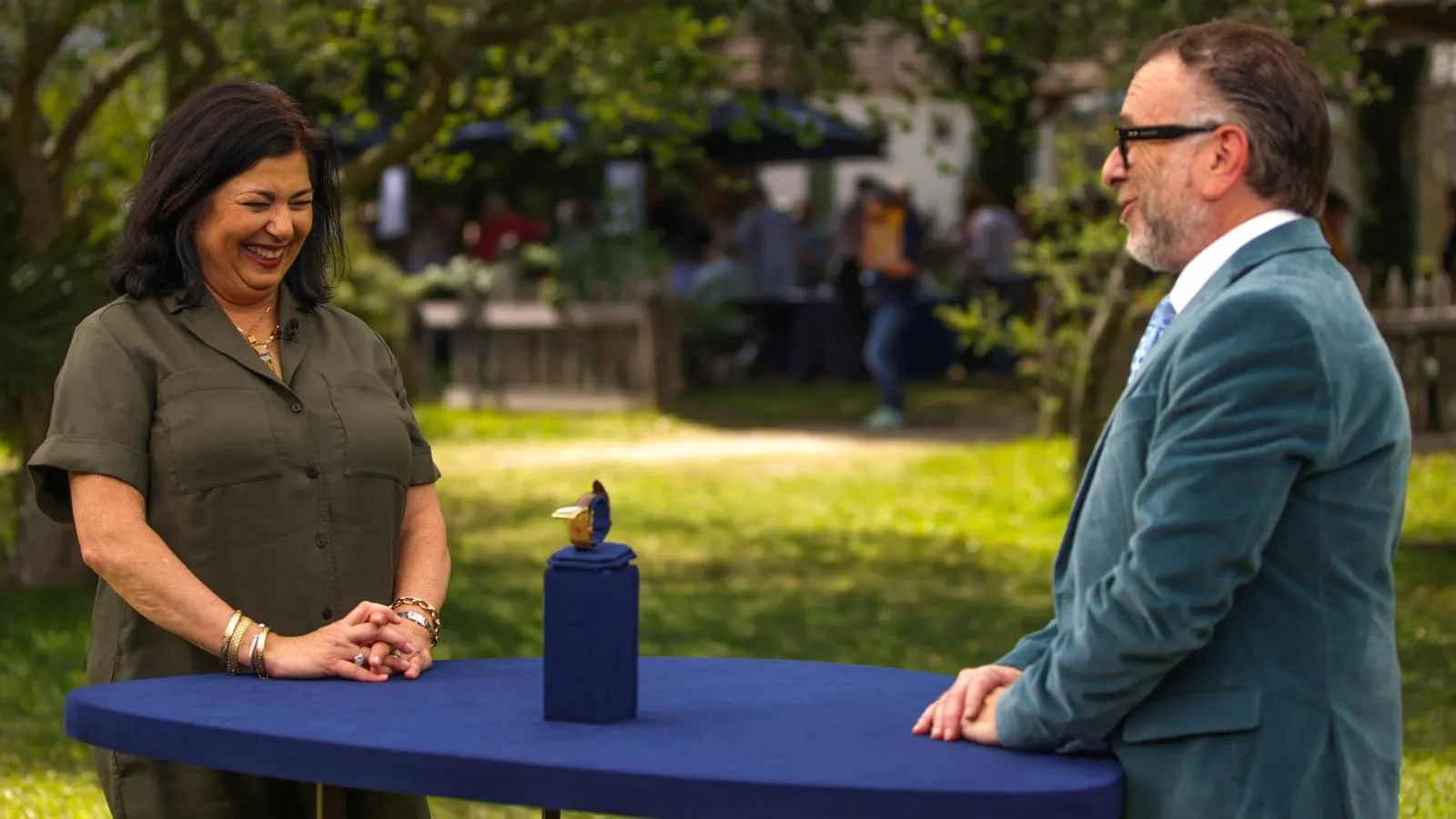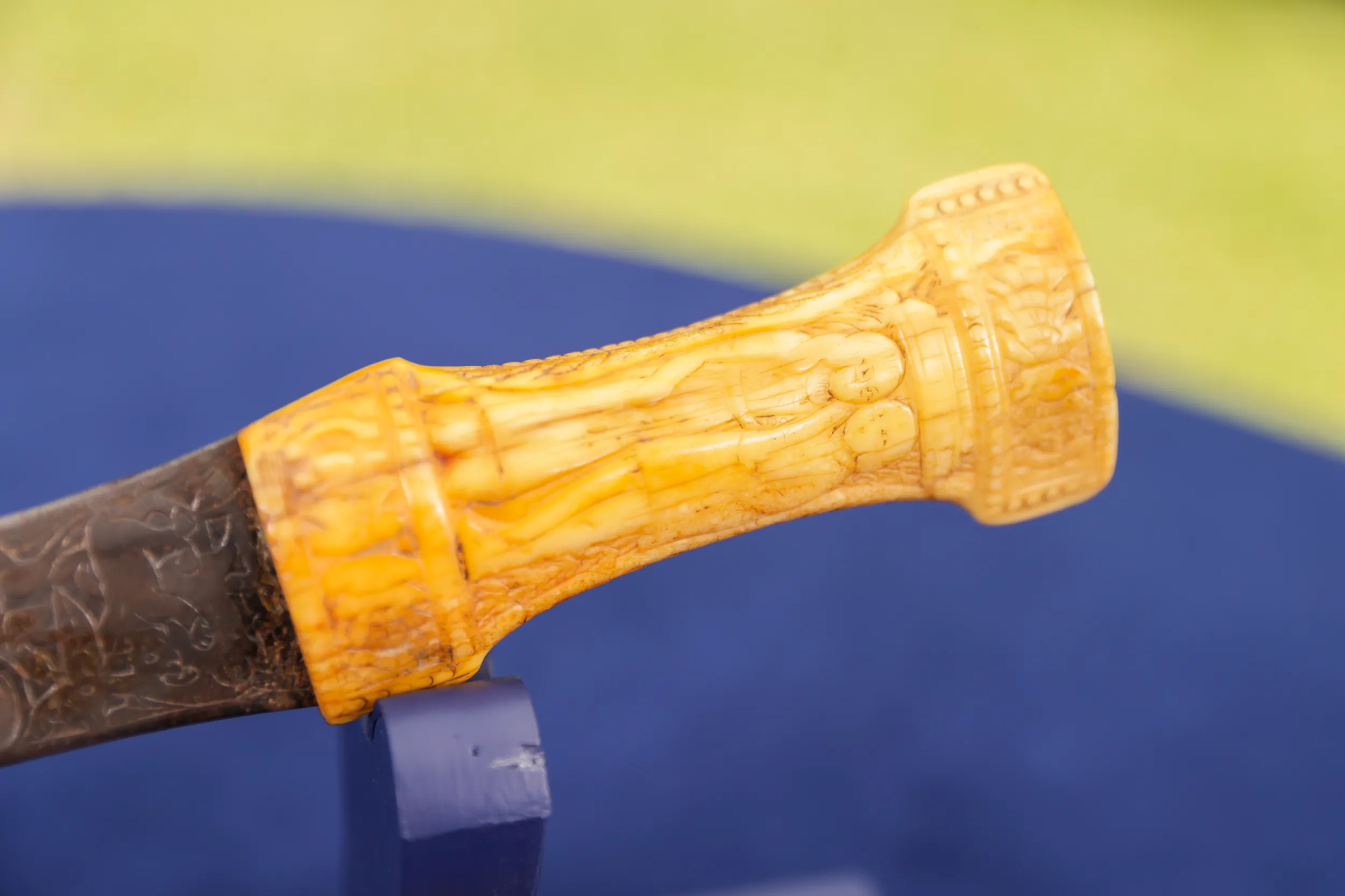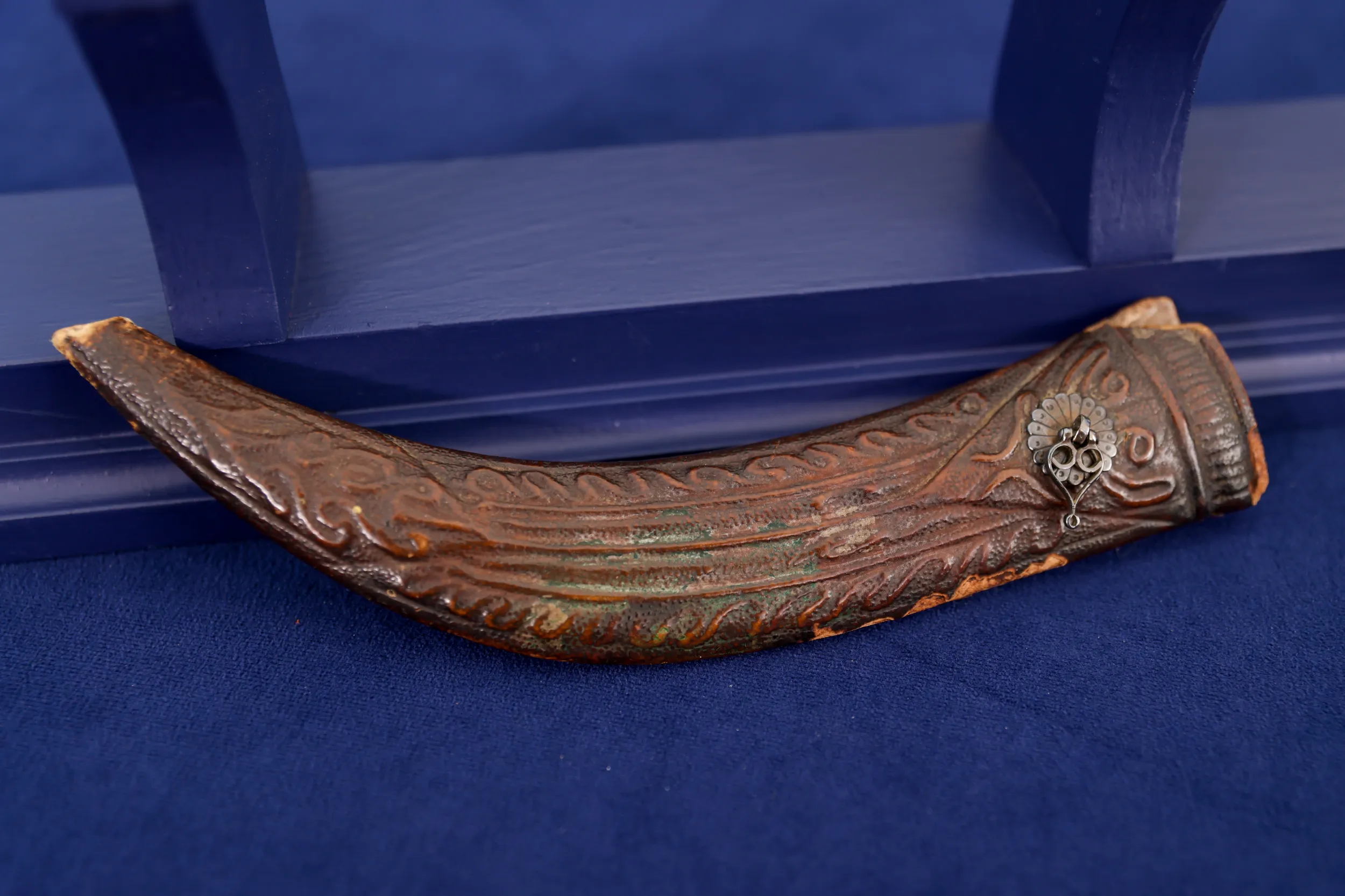GUEST: When I was a little girl, probably about nine years old, my dad had a peanut farm in Charleston, South Carolina. And one day, he came home with this old gentleman he found in the woods. He was just, had an old shack. He was homeless. And so Dad said, "Do you want a little job?" And he said, "Yeah." So he brought him home, and all of us kids fell in love with him. He had this, plus other little things in, of interest. And so I, I liked that, and so he s, said, "Take it, just don't play with it. It's not good for you to play with." So I said, "Oh, I won't." Years ago, I sent pictures to, uh, Smithsonian Institute, and, uh, they said they couldn't check it out unless they had it visually. But they thought it could be 1200 BC.
APPRAISER: This was made in Persia, present-day Iran, and it was made in the mid-19th century, circa 1850. It was made in the Qajar Dynasty, when they ruled Persia from the late 18th century to 1925. And the reason we can be so certain is the fact that there are human figures, which are on the grip.
GUEST: Yeah.
APPRAISER: Now, generally, in Islamic art, it was considered profane to...
GUEST: Yeah.
APPRAISER: ...make the human image. And it wasn't until the Qajar Dynasty, in particular, that, because there's nothing in the Quran that prohibits it.
GUEST: Right.
APPRAISER: So, suddenly, it appears and flourishes...
GUEST: Mm-hmm.
APPRAISER: ...during that period of time. This type of dagger is called a jambiya.
GUEST: Jambiya?
APPRAISER: Um, yeah, which I believe is Arabic for dagger.
GUEST: Uh-huh, okay. (chuckles)
APPRAISER: And it basically refers to the curve of the blade. This form of dagger you will see from Morocco all the way through Persia...
GUEST: Mm-hmm.
APPRAISER: ...and even India. It was a very popular design, and it has this wonderful carved walrus ivory grip. The good thing about it being walrus
ivory, as opposed to elephant ivory, is that it comes with fewer restrictions on selling it. Walrus ivory is regulated under the Marine Mammals
Protection Act. Due to the level of decoration, I would guess that this is more of something one would wear as a dress as opposed to actually use as a weapon.
GUEST: Mm-hmm, yeah.
APPRAISER: The other thing that's wonderful about it is, is that it's got its, appears to be its original wooden scabbard covered in leather, and it's in excellent condition. And you almost never see that. At auction, it would probably make somewhere between $5,000 to $7,000. $5,000 to $7,000?
GUEST: Yeah.
APPRAISER: Without the scabbard, I would think that, that the value is only $3,000 to $5,000. It really elevates the value.
GUEST: Yeah-- well, good.










